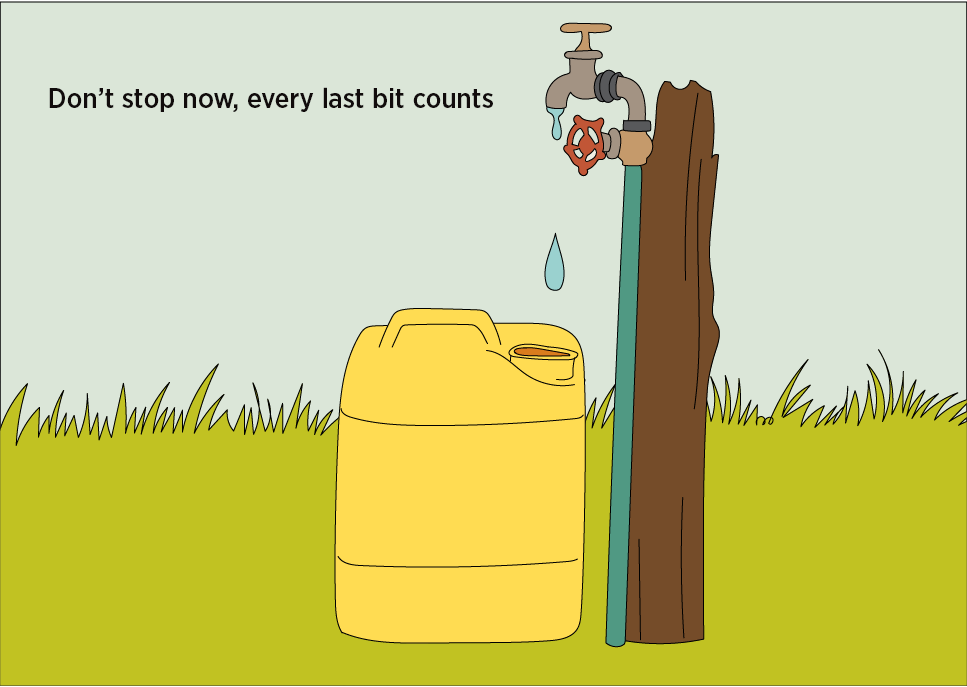Post event engagement: some final steps to make the most out of your time and investment
How often after an event or conference do we sigh in relief and immediately move on to the next thing? While it's exciting - and sometimes a relief - to get back to your day-to-day work, taking the time for post-event follow up will help you achieve real and lasting results (yes, we’re talking to all of you who attended the African Protected Areas Congress!).
Follow up steps for greater success
1. Share with your team
Often, only a few team members actually attend events. So take the time when you’re back together to share your experience with them. For example, last week the Maliasili team who attended APAC shared their experiences with the larger team. This included highlights and reflections on what the Kigali Call to Action means for our work and mission of supporting community conservation across Africa.
When meeting with your team post-event, consider using these questions to guide your debrief:
What stood out for you? What did you learn?
What are your main takeaways from the event?
What discussions would matter to your organization?
Who did you meet that matters to your organization?
2. Follow up with your contacts
You made the most of your networking opportunities during the event, including reconnecting with old acquaintances or meeting new and exciting contacts. Don’t wait for the next event to communicate - do it now. Reaching out after an event lets someone know they matter to you and your organization. It demonstrates credibility and helps build trust that you’re reliable and mission-driven.
Send a quick, timely email with a thank you message, or a follow-up to a conversation.
Share useful documents with important information about your organization, e.g. your latest Annual Report, Strategic Plan, or Impact Deck.
Connect on LinkedIn, the most popular networking platform for professionals. Connecting there can help nurture important relationships, as well as help your new contacts keep up with your work and achievements.
NOTE: if you are not on LinkedIn, you might want to set up an account. It’s easy and free.Share ways for them to subscribe to your newsletter or follow your organization on social media so they can keep up to date with your efforts and milestones.
Connect them with others who might be useful for them to know or meet. Think of how great it is when someone makes a connection for you - look for ways to do the same.
3. Email recap
Share an email recap with your board, followers and supporters via an e-blast. This should include your highlights and achievements during the event, and what you're looking forward to in the future. This newsletter by Honeyguide, sent out after APAC, is an excellent example of how to do this well.
4. Share your highlights on other platforms
Draft a blog post, or create a short highlights video. Ensure that your various audiences are kept up to date. We love this blog post by Blue Ventures that summarizes their involvement at APAC.
5. Review and reflect
What worked well at the event? What didn't? What could you have done differently, both as an individual and as a team? An honest review and reflection will help you evaluate your participation and input, and be better poised for similar events in the future.
6. REST!
Big events demand a lot of time and energy and often involve back-to-back, long working hours. Make sure you prioritize rest to prevent burnout, and to allow you to approach upcoming work with renewed energy.
Once all that is done, then…
7. Plan and prioritize
What's next? Where should you focus your time and energy? What opportunities do you see for your team after this event, and how can you best maximize on them? For example, a major takeaway for Maliasili is that there is a strong appetite for conservation leaders to meet regularly, share ideas, and brainstorm solutions. Going forward, we now want to identify ways we can continue to support this and play a convening role.

